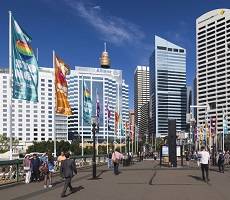November 14, 2015
Where to have great ideas + Workplace professions + London’s office market 0
 In this week’s newsletter; Giuseppe Boscherini explores the growing importance of creativity at work; Mark Eltringham argues that the three professions of the workplace, HR, IT and FM need to adapt and notes a growing disconnect between a firm’s earnings and the number of people it employs. In commercial property, demand for office space in London continues to overwhelm its availability, with English regions outside the Capital leading construction growth. High job demands, stress and job insecurity are among the main reasons why people go to work when they are ill, and data shows the Internet of things will connect 6.4 billion objects next year. You can also download the new issue of Work&Place and access our first Insight Briefing, produced in partnership with Connection, which looks at agile working in the public sector. Visit our new events page, follow us on Twitter and join our LinkedIn Group to discuss these and other stories.
In this week’s newsletter; Giuseppe Boscherini explores the growing importance of creativity at work; Mark Eltringham argues that the three professions of the workplace, HR, IT and FM need to adapt and notes a growing disconnect between a firm’s earnings and the number of people it employs. In commercial property, demand for office space in London continues to overwhelm its availability, with English regions outside the Capital leading construction growth. High job demands, stress and job insecurity are among the main reasons why people go to work when they are ill, and data shows the Internet of things will connect 6.4 billion objects next year. You can also download the new issue of Work&Place and access our first Insight Briefing, produced in partnership with Connection, which looks at agile working in the public sector. Visit our new events page, follow us on Twitter and join our LinkedIn Group to discuss these and other stories.





























November 9, 2015
Business success is progressively less related to employment levels 0
by Mark Eltringham • Comment, Technology, Workplace, Workplace design
If you want to understand exactly how the economy has changed over the last few decades, one of the most important statistics is also one of the least remarked upon. It is the growing disconnect between a firm’s earnings and the number of people it employs, a statistic that puts paid to the lie that people are an organisation’s greatest asset. Once upon a time, of course, there was a direct correlation of one sort or another between the a firm’s revenue and the number of people it employed and consequently the amount of space that it took up. This was especially true for the world’s great manufacturers and other industries engaged in what was once proper work; moving, creating, destroying and maintaining things. Growth and success meant more employment and more space. There were economies of scale but the upshot was more or less an arithmetic progression in employment based on earnings.
(more…)